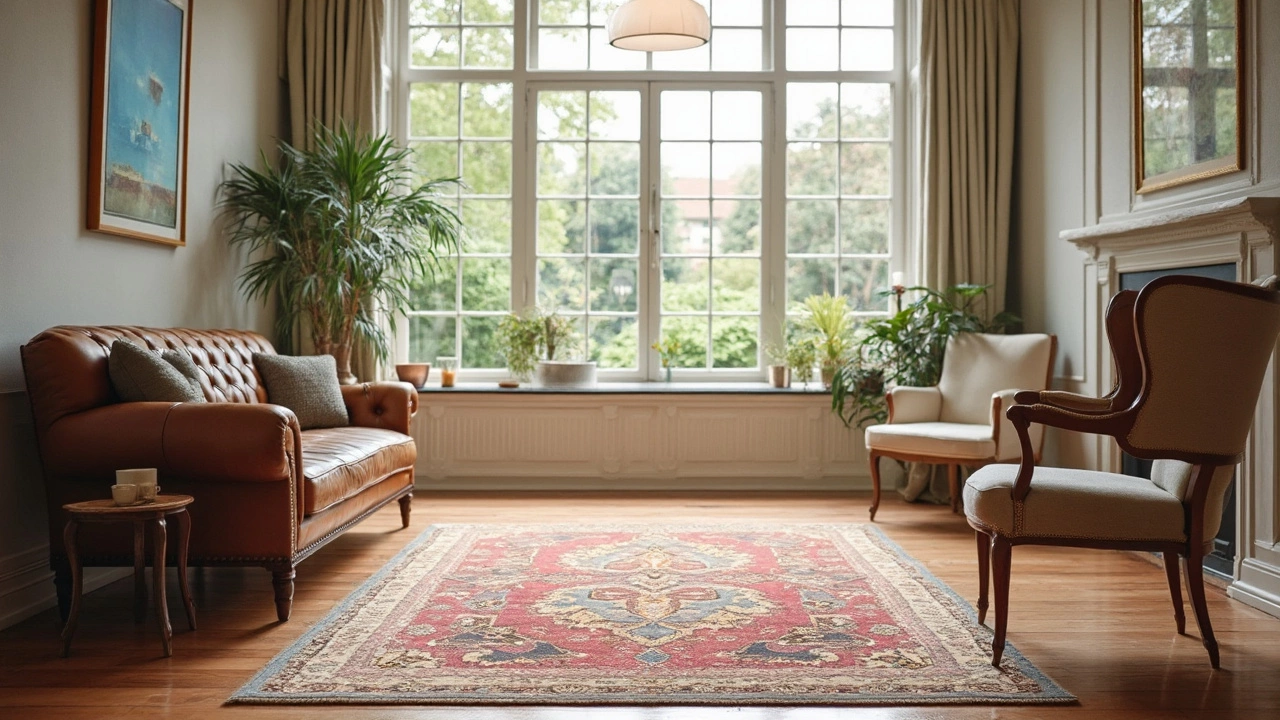Rug Placement Made Simple: Choose the Right Spot Every Time
If you’ve ever stared at a blank floor and wondered where a rug should go, you’re not alone. The right rug can pull a room together, hide a cold tile, or define a conversation area. The trick is figuring out the exact placement that works for your furniture, foot traffic, and style. Below are the basics you need to get it right, no interior‑design degree required.
Size Matters: Matching Rug to Furniture
First thing’s first – the rug’s size has to play nice with what’s around it. Here’s a quick cheat sheet:
- Living room: If you want all the front legs of your sofa and chairs on the rug, add about 24‑30 inches of border on every side. For a larger sectional, a 9 × 12 ft rug usually does the trick.
- Two‑piece sofa: Only the front legs need to be on the rug. This lets the rug act as a visual anchor without crowding the space.
- Dining room: Measure the table and add at least 36 inches all around. That gives enough room for chairs to slide in and out without catching the edge.
- Bedroom: A runner or a large rug placed under the bed works best. For a full‑size bed, aim for a rug that’s at least 60 inches wide so the sides are covered.
- Hallways: A narrow runner that’s 18‑24 inches wide keeps the floor protected while adding a touch of color.
When you’re unsure, grab a piece of painter’s tape and outline the rug on the floor. Walk around it – does it feel balanced? Adjust the tape until it looks right, then order the rug.
Common Layout Rules and When to Break Them
Most designers swear by a few simple rules, but they’re not set in stone. Use them as a starting point, then tweak for your own needs.
Rule 1: Keep furniture legs on the rug. This creates a unified look. If space is tight, only the front legs need to sit on the rug – the back legs can stay on the floor.
Rule 2: Align the rug with the room’s focal point. If your TV or fireplace is the star, position the rug so it frames that feature. It draws the eye and balances the space.
Rule 3: Leave breathing room. You don’t want a rug that’s flush against a wall. A gap of 2‑4 feet makes the room feel larger and prevents a cramped vibe.
When to break the rules? If you have an open‑plan layout, you can use a single large rug to tie the kitchen, dining, and living areas together. In that case, ignore the “legs on the rug” rule – the rug becomes a floor‑level carpet that defines the whole zone.
Another scenario: a small apartment with a stand‑alone coffee table. A round rug under the table adds softness without needing to accommodate sofa legs.
Finally, don’t forget traffic flow. A rug that sits in the middle of a high‑traffic path will wear out fast. If you expect a lot of foot traffic, choose a low‑pile material and consider a runner instead of a full‑size rug.
Wrap‑up: measuring, visualizing with tape, and testing a few layout ideas will save you money and headaches. Start with the size‑to‑furniture guide, then play with placement until the room feels right. A well‑placed rug is cheap décor that makes a big impact – no more guessing, just simple steps to a room that looks intentional and inviting.
Discover if you should put furniture on a new rug right away, tips to prevent dents, how to protect your new rug, and avoid common rug placement mistakes.
Jul, 1 2025
